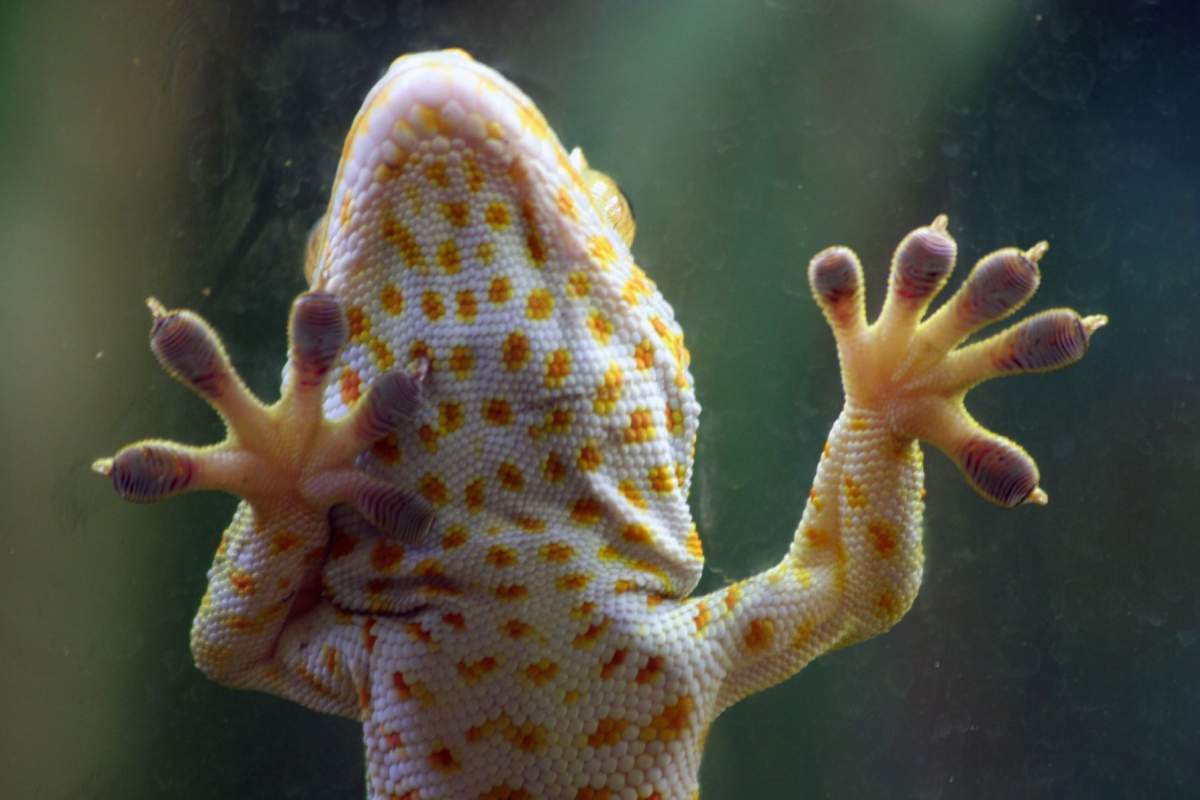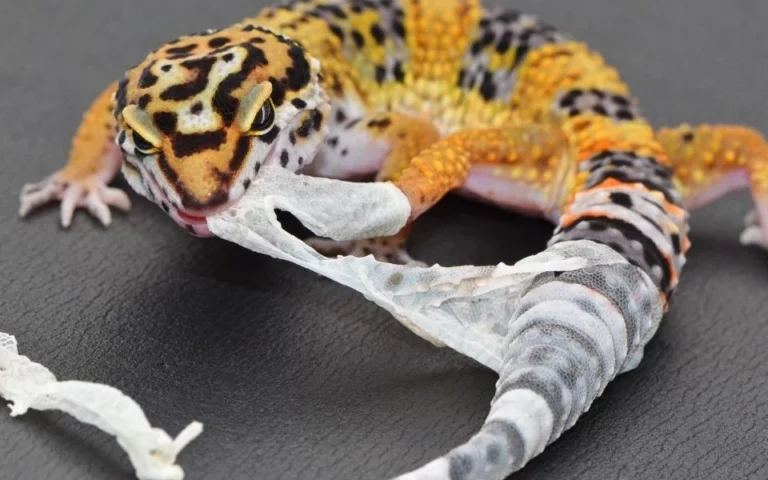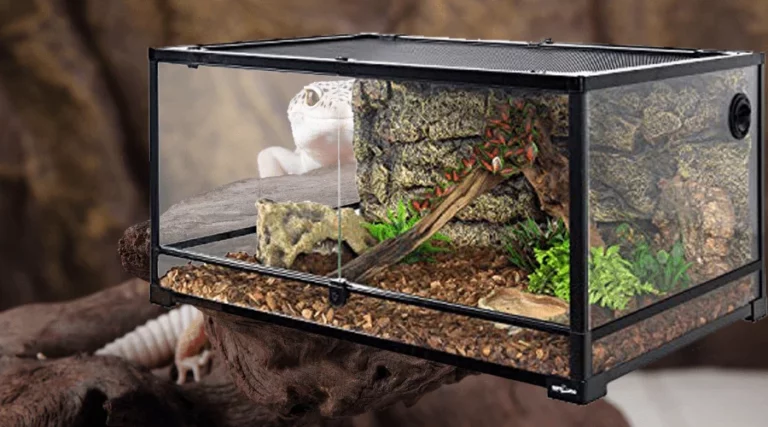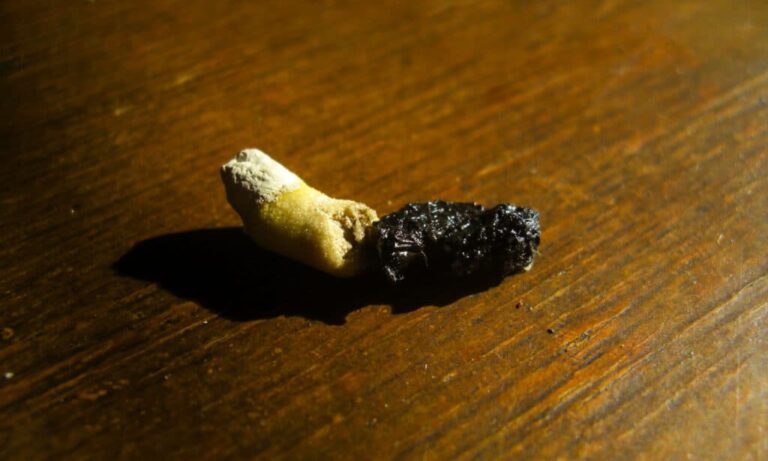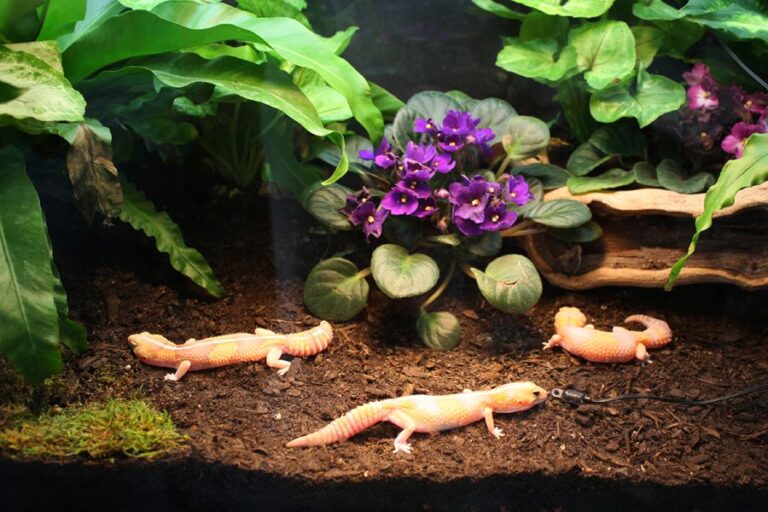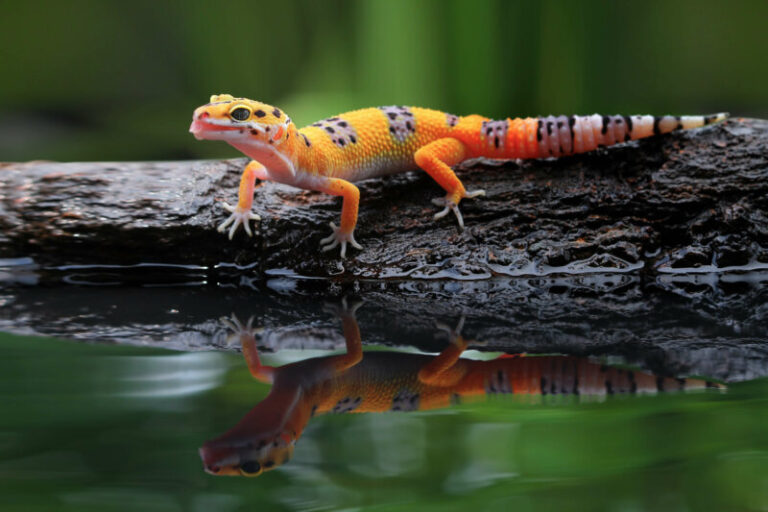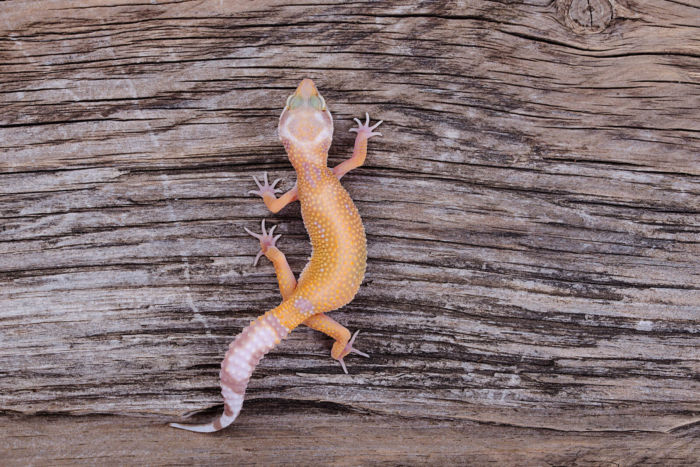Can Leopard Geckos Climb Glass? Mystery of Their Unique Abilities
As a passionate leopard gecko enthusiast, I vividly remember the first time I watched my little gecko’s antics in its terrarium. It wasn’t long before I noticed something intriguing – my gecko’s seemingly futile attempts to scale the glass walls of its enclosure. It left me wondering, “Can leopard geckos really climb glass?
No, they stand out from other geckos because they can’t climb glass or slippery surfaces; they lack sticky feet. When they engage in glass surfing, also often because they’re exploring, feel bored, hungry, or chilly. They might also do it to escape bothersome mites or other geckos in their enclosure.
Join me on this journey of discovery as we unravel the truth about their distinctive behavior.
What Is Glass Surfing?
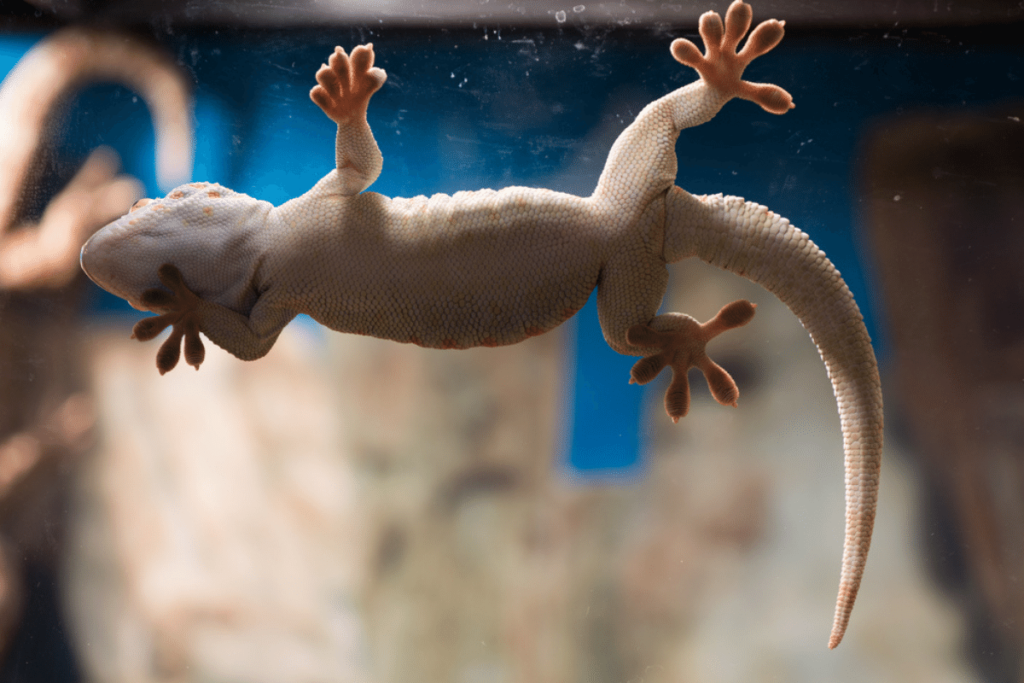
Glass surfing, also known as glass dancing due to the wiggling motion involved, can be observed in leopard geckos and various other gecko species, as well as many reptiles housed in tanks. This behavior entails the reptile repeatedly moving along the enclosure’s glass walls or attempting to climb them.
While it is not exclusive to leopard geckos, understanding this behavior is essential for ensuring the well-being of your pet and making necessary adjustments to their environment.
Why Leopard Geckos Aren’t Great Climbers?
Leopard geckos are fascinating members of the Eublepharidae subfamily within the diverse world of geckos, and stand out for their unique characteristics. Setting them apart are the remarkable features found in their eyes and toes.
Unlike their counterparts in the Gekkonidae family, they are equipped with movable eyelids and clawed toes. This distinct trait allows them to blink and close their eyes, a behavior rarely seen in other gecko species.
Further, one of the key factors that restrict leopard geckos from excelling as climbers is their lack of specialized toe pads known as lamellae. These remarkable toe pads, found in many other gecko species, are designed for expert climbing. However, leopard geckos, lacking these adaptations, are bound to a terrestrial lifestyle.
While they may possess the capability to ascend rocks and sizable branches, their natural inclination keeps them close to the ground. It’s rare to see a leopard gecko venturing to significant heights, as their climbing abilities are limited by their unique anatomical features
Underestimating Their Climbing Abilities:
Their natural curiosity leads them to explore, sometimes even finding escape routes that owners might not anticipate. It’s crucial to recognize this behavior and take precautions when setting up their tank.
While celebrating their escape attempts is not the goal, it’s essential to be mindful of how you arrange tank decorations and equipment. Even if you believe there’s no feasible escape route, a determined gecko will persist in its efforts for hours or even days until it either succeeds or relinquishes the endeavor.
For instance, seemingly delicate and slender artificial plants can surprisingly serve as climbing aids. This insight isn’t derived from personal experiences of gecko escape attempts but from observations of fellow gecko owners facing similar challenges.
In addition, to prevent potential escapes, it’s wise to refrain from placing tall or slender objects in the tank. They lack adhesive foot pads, but their claws offer sufficient grip on non-slippery surfaces.
Keep all tank decorations, equipment, and items positioned at a lower height. This approach not only reduces the risk of escape but also minimizes the chances of injury should your gecko take an unexpected tumble to the tank’s bottom.
If your pet resides on a soft substrate like Eco Earth, the risk of injury from a fall is relatively low. However, if they are housed on harder surfaces such as slate rock, stone tile, or even paper towels, the likelihood of sustaining significant injuries increases.
Why Is Leopard Gecko Climbing The Glass?
Escape Instinct: These creatures, known for their inquisitive nature, may attempt to break free from their enclosures, often due to a lack of mental stimulation or environmental dissatisfaction. This can manifest as glass-climbing behavior, driven by boredom or discomfort caused by inadequate hiding spots and temperature gradients. Ensuring their enclosure meets their needs is crucial in such cases.
Access to Resources: It can also stem from their desire to reach food or water. While they possess climbing abilities, they may momentarily forget that vertical surfaces aren’t the most efficient paths. Providing ample hiding spots, rearranging food and water dishes, and occasionally assisting them can alleviate this.
Mirror Mistake: Sometimes, when they perceive their reflection in a mirror or window, they mistake it for another of their kind, prompting them to climb the glass. This is normal behavior, and offering climbing structures, such as driftwood, can help them satisfy this natural urge.
Basking Behavior: These creatures climb primarily to bask in the heat emitted by sunlight or lamps. Their tiny toe pads provide grip on smooth surfaces, aiding in this endeavor. Also, allows them to position themselves optimally to absorb heat, demonstrating their unique adaptations.
Territorial Instinct: This behavior can indicate their desire to assert dominance or monitor their territory. They may mistake their reflection for another, leading to climbing attempts. Secure adequate surfaces can prevent potential injuries.
Stress and Seeking Refuge: Moreover, it may indicate stress or fear. Enclosure limitations, concerns about others, or daytime boredom can contribute to this behavior. Furnishing their habitat with hiding places and enrichment can help alleviate stress and frustration.
Gravid (Pregnant) Needs: Gravid individuals seeking a suitable nesting site may resort to climbing if none is available. The smooth surface can mimic an egg’s texture, attracting them. Providing nesting boxes or shelters can offer comfort and safety.
Health Concerns: Another point is underlying health issues, including respiratory infections, parasites, or vitamin deficiencies. If you observe such behavior along with other symptoms like weight loss or breathing difficulties, a vet check-up is essential.
Curiosity and Exploration: These creatures are naturally curious, often exploring their surroundings. While it might amuse onlookers, it’s important to ensure their safety. Enhancing their enclosure with rocks or branches can create safe climbing opportunities.
Fear and Mishandling: If they are attempting to climb the glass, it could be a reaction to previous mishandling, leading to fear. Patience and gradual acclimatization can help them regain trust.
Alternatively, they might be searching for an exit, indicating the need for more hiding spots or enclosure adjustments. To aid their grip on glass, misting or adding a temporary surface barrier can be helpful.
Comprehensive Solutions for Leopard Gecko Care
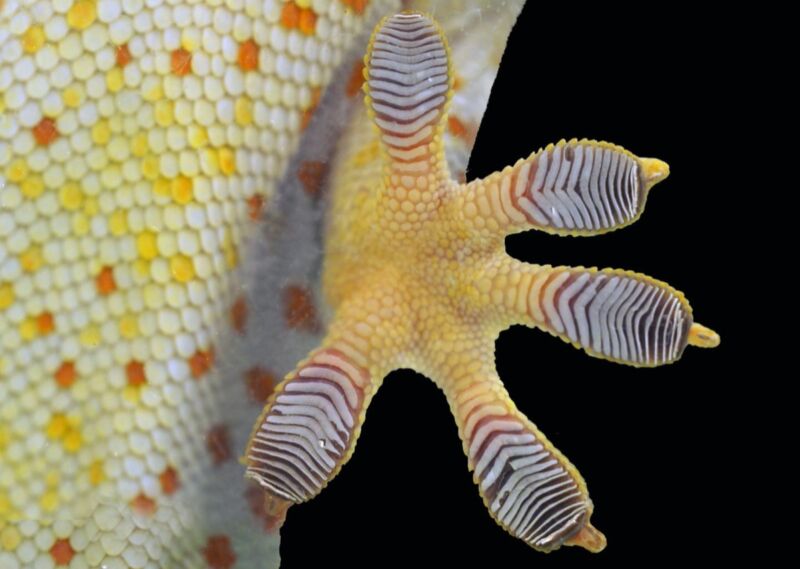
Obstacle Placement: To discourage your gecko from climbing the glass, consider placing a screen or another obstacle in front of the tank. This will disrupt their grip and make it more challenging.
Sticky Solutions: Alternatively, you can use sticky tape or gel on the glass surface. This creates an unpleasant texture that your gecko will likely avoid, deterring them from climbing.
Substrate Selection: Another effective approach is to choose a different substrate, such as sand, which is less conducive to climbing. By altering the environment, you can reduce the inclination to climb glass and ensure safety and contentment.
Ample Hiding Places: Provide a variety of hiding places within the enclosure to make your gecko feel secure. Utilize materials like cardboard boxes, plastic tubs, or hollow logs. Ensure hiding spots are available on both the warm and cool sides of the enclosure, facilitating thermoregulation and offering entertainment.
Adequate Water Dish: Offer a generously sized water dish that allows them to soak if desired. This not only aids in hydration but also supports proper shedding of their skin, which occurs every 2-4 weeks. Inadequate shedding due to a lack of water can lead to health issues.
Maintain Clean Habitat: Regularly clean the habitat to ensure its well-being. Debris can harbor harmful microorganisms and hinder thermoregulation. Perform daily removal of uneaten food and waste. Weekly, conduct a thorough cleaning using reptile-safe cleaners, followed by complete drying to create a more enjoyable and healthy environment for both you and your pet.
FAQs
Can geckos climb on glass?
No, Most geckos can climb on glass due to their unique adhesive toe pads. However, leopard geckos, unlike some other gecko species, cannot climb glass as they lack sticky feet.
What can leopard geckos climb on?
Leopard geckos can climb on various textured surfaces, such as rocks, branches, and rough substrates, using their non-adhesive toe pads.
Is glass surfing bad for leopard gecko?
Yes, Glass surfing in leopard geckos may indicate stress or other issues. While not inherently harmful, it’s essential to identify and address the underlying causes of this behavior.
Can leopard geckos climb up flat surfaces?
Yes, Leopard geckos can navigate flat surfaces and may use their claws to grip non-slippery materials like plastic or wood.
What is not safe for leopard geckos?
Leopard geckos should not be exposed to extreme temperatures, toxic substrates, or overcrowded enclosures. Avoiding these ensures their safety and well-being.
What material can geckos not climb?
Geckos with adhesive toe pads can climb most surfaces. However, smooth, glass-like surfaces are challenging for geckos like leopard geckos that lack sticky feet.
What can geckos not climb?
Geckos, especially those without sticky feet, cannot easily climb smooth or slippery surfaces, including glass, due to their inability to create adhesion.
Is it safe to grab a gecko?
Yes, Handling geckos, including leopard geckos, should be done gently and infrequently to avoid causing stress or harm. Always handle them with care, using proper techniques.
Final Words
In my observations, it’s clear that leopard geckos have a unique feature that sets them apart from certain other gecko species – they can’t climb glass or slippery surfaces because they lack sticky feet. This distinction in their abilities is quite noteworthy.
Also, when they exhibit the behavior commonly referred to as “glass surfing,” I’ve noticed that it can be attributed to various factors such as their natural curiosity, occasional boredom, hunger, or even discomfort.
Furthermore, they may use this behavior as a way to escape from potential irritations like mites or the presence of other geckos in their enclosure. This insight into their behavior has helped me better understand and care for these captivating reptiles.

